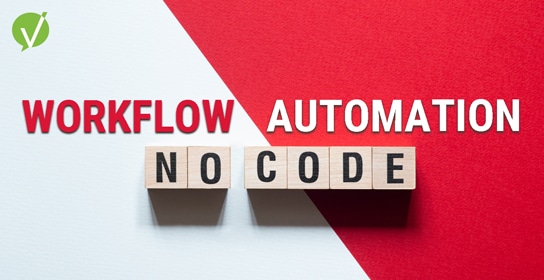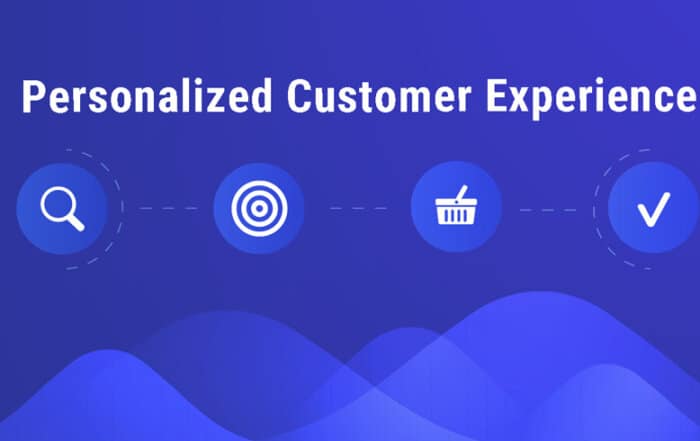No Code Workflow Automation: Empowering Business Efficiency
Introduction
Digital transformation has become a top priority for companies looking to stay ahead of the curve. One of the key drivers of digital transformation is no code workflow automation, a game-changing technology that empowers businesses to streamline processes, boost efficiency, and eliminate the need for complex coding.
No code workflow automation is a powerful tool that enables businesses of all sizes to automate various tasks, enhancing productivity and ultimately contributing to the bottom line. By embracing digital transformation through the use of automation tools, businesses can position themselves for success in a highly competitive market.
Key Takeaways
- No code workflow automation is a crucial technology for achieving digital transformation in businesses.
- Implementing automation tools can significantly boost efficiency and streamline processes, ultimately driving business success.
- No code workflow automation eliminates the need for complex coding, making it accessible to businesses of all sizes.
- Embracing automation tools is key to remaining competitive in today’s fast-paced business landscape.
- Automation tools can contribute to a more productive and efficient work environment.
Understanding No Code Workflow Automation
If you’re tired of manually performing repetitive tasks or hiring developers to code your workflows, no code workflow automation is the solution you’ve been waiting for! With automation, you can streamline your business processes and eliminate time-consuming manual work without having to write a single line of code.
No code workflow automation tools provide a simple drag-and-drop interface that allows you to automate workflows easily and efficiently. You can create automated workflows for virtually any task, from sending emails to updating spreadsheets, all without having to write a single line of code.
This type of automation is widely used in industries such as finance, marketing, and human resources, where repetitive tasks such as data entry and report generation can significantly slow down productivity. By using no code workflow automation, you can save time, reduce errors, and free up your team to focus on more strategic activities.
Although no code workflow automation tools eliminate the need for coding, they still require careful planning and design. You need to define your workflows and tasks before automating them, which requires a deep understanding of how your business operates and where automation can add the most value.
So, whether you’re looking to automate a single workflow or your entire business, no code workflow automation is the key to improving your business efficiency and productivity.
Exploring No Code Workflow Automation Tools
Now that you have a good understanding of how no code workflow automation can help your business, it’s time to explore some of the best no-code automation tools available in the market. These tools can help you automate various tasks and workflows, boost efficiency, and streamline business processes.
Automation software
One of the popular no code workflow automation tools is automation software. Automation software allows you to automate workflows without the need for coding. These tools use drag-and-drop interfaces that simplify the process of building automated workflows. By using automation software, you can create custom workflows tailored to your business needs in no time.
No-code automation tool
Another no code automation tool worth exploring is no-code automation tools. These tools are designed to enable anyone, regardless of technical skills, to automate tasks and workflows. With no-code automation tools, you can create automated workflows using pre-built templates or customize your workflows to fit your specific business needs. This tool makes it easy for businesses to automate various processes such as data entry and report generation.
Best no-code automation platforms
There are also several no-code automation platforms available that offer a wide range of features and capabilities. These platforms provide businesses with powerful automation tools to streamline workflows and optimize business operations. Some of the best no-code automation platforms include Zapier, IFTTT, and Kissflow. These platforms are user-friendly and easy to set up, allowing you to automate tasks and workflows in minutes.
No-code tool
Finally, there are also no-code tools that enable businesses to automate processes without the need for coding. No-code tools use a visual interface to automate tasks, making it easy for businesses to create custom workflows without any technical knowledge. These tools offer an intuitive user experience and are ideal for businesses that want to automate processes quickly and efficiently.
No-code workflow automation tools offer a powerful way to streamline business processes, boost efficiency, and improve productivity. By exploring these tools, you can find the right solution to automate your workflows and optimize your business operations.
Advantages of No Code Workflow Automation
Implementing no code workflow automation can provide numerous advantages for your business, including improved automation, increased efficiency, streamlined tasks, and elevated productivity. By automating repetitive tasks, such as data entry or file organization, you can free up time for your team to focus on more strategic and creative initiatives. This can lead to faster turnaround times, reduced errors, and increased collaboration.
Automating workflows can also streamline processes by eliminating bottlenecks and minimizing downtime. This can help your business operate more smoothly and respond quickly to changing customer needs or market trends. As a result, you can enhance the overall customer experience, boost satisfaction and loyalty, and drive revenue growth over time.
No code workflow automation can also facilitate scalability and growth by enabling your business to handle increasing volumes of work without adding additional resources or staffing. By leveraging automation tools, you can optimize workflows, reduce costs, and increase capacity in a more sustainable manner.
Moreover, no code workflow automation can help your business stay competitive in an increasingly digital landscape. By embracing automation, you can stay up-to-date with emerging technologies and trends, enabling your business to adapt to changing customer needs and preferences. This can help you stand out from the competition and create a more innovative and agile company culture.
All in all, no code workflow automation can revolutionize your business operations, driving efficiency, productivity, and growth. By embracing automation tools, you can empower your team with the tools necessary to accomplish tasks more effectively and efficiently, ultimately helping to make your business more successful in the long run.
Integrating No Code Workflow Automation
Integrating no code workflow automation into your business processes is easier than you may think. With its drag-and-drop interface, automating workflows can be achieved with just a few clicks. This eliminates the need for complex coding and empowers teams to take control of their own processes. Automation tools can be integrated into your existing business processes, streamlining workflows and optimizing overall efficiency.
| Benefits of Integration |
|
Integrating no code workflow automation can bring significant benefits to your business processes. It can help you to automate repetitive tasks, freeing up more time for your teams to focus on high-value activities. By automating workflows, you can reduce manual errors and optimize resource allocation, resulting in significant cost savings. So why not automate your business processes today and see the benefits for yourself?
Choosing the Right No Code Workflow Automation Tool
With the myriad of options available in the market, selecting the right automation tool can be overwhelming. However, considering your specific business needs can help narrow down the best options. Here are some factors to deliberate on:
- Features: Look for automation platforms that offer features that align with your business requirements. For instance, if you need to automate marketing workflows, consider tools with CRM integration, email automation, and lead generation capabilities.
- Ease of use: Choose a tool that provides a user-friendly experience with simple drag-and-drop interfaces. This ensures that your teams can use the platform with minimal training, empowering them to create and automate workflows quickly.
- Scalability: Consider the ability of the tool to scale with your business growth. Select a tool that can handle complex workflows with a considerable workload.
- Customization: Your business has unique workflows that may not be available as pre-built templates in the automation tool. Choose a platform that offers customization options to build workflows tailored to your specific needs.
There are several no code workflow automation tools available in the market. Do your research and evaluate the options against your business needs. Some of the best no code automation platforms to check out include Zapier, Integromat, and Airtable.
No Code Workflow Automation in Practice
Now that you understand the concept of no code workflow automation and its potential benefits, let’s take a look at some real-life examples of how businesses are leveraging these tools.
One area where no code automation has been particularly effective is in sales and marketing. With workflow automation tools, businesses can streamline lead nurturing and follow-up processes, ensuring that no potential customer falls through the cracks. By automating repetitive tasks such as email outreach, businesses can free up sales and marketing teams to focus on more strategic, high-value activities.
Customer relationship management (CRM) is another area where no code workflow automation can make a significant impact. By automating processes such as data entry, lead scoring, and even customer support ticket management, businesses can elevate their CRM operations and deliver a more personalized and efficient experience to customers.
Workflow applications are also fertile ground for no code automation. By streamlining processes such as content creation, approvals, and publishing, businesses can ensure that their teams are operating at peak efficiency. With drag-and-drop tools, you can create and customize workflows to align with your specific business needs.
These are just a few examples of how businesses are leveraging the power of no code workflow automation. As you explore these tools, consider how they can help optimize your own business processes and unlock new levels of efficiency and productivity.
Overcoming Challenges in No Code Workflow Automation
While no code workflow automation tools offer immense benefits in terms of streamlining business processes, there may be challenges when implementing them. Here are some common challenges and strategies for overcoming them:
Customization Options
One of the challenges of using no code workflow automation tools is finding the right balance between customization and ease of use. While pre-built workflows can save time and effort, they may not fully meet your unique business needs. On the other hand, customizing workflows may require more time and resources.
A good strategy is to start with pre-built workflows and then customize them to suit your specific requirements. You can also opt for tools that offer a balance between pre-built workflows and customization options.
Utilizing Pre-Built Workflows
Another challenge in implementing no code workflow automation is finding pre-built workflows that are relevant to your business operations. Some tools may offer generic workflows that may not fit well with your business processes.
A strategy for overcoming this challenge is to look for tools that offer pre-built workflows that are specific to your industry or business function. You can also explore community-driven libraries of workflows and templates to find relevant pre-built options.
Effective Workflow Management
Implementing no code workflow automation tools requires effective workflow management to ensure optimal efficiency. This involves defining clear workflows, setting up roles and permissions, and monitoring progress to identify and resolve bottlenecks.
A good strategy is to leverage tools that offer workflow management features, such as visual dashboards, analytics, and real-time reporting. You can also assign a dedicated team or individual to manage the workflows and ensure they align with business objectives.
Overcoming these challenges can help you fully leverage the benefits of no code workflow automation tools, streamline business operations, and enhance overall efficiency.
The Future of No Code Workflow Automation
No code workflow automation has seen significant growth in recent years, and the trend is expected to continue in the future. One area that is likely to see development is in visual workflow management platforms that allow users to create and manage workflows more intuitively.
As businesses continue to prioritize efficiency and productivity, the demand for automation tools that can be customized to unique business needs will continue to grow. Workflow management platforms that offer flexibility and scalability will be highly sought after, allowing business owners to streamline processes and optimize operations.
Another trend that is expected to emerge is the ability for no code workflow automation tools to better integrate with existing business systems. This will enable businesses to automate tasks across different departments and systems, driving greater efficiency and productivity.
Ultimately, the future of no code workflow automation will prioritize empowering business users through ease-of-use, customizability, and efficient workflow management. As businesses continue to adapt to changing needs and demands, no code workflow automation will play an essential role in driving success.
Unlocking Efficiency: Harnessing No Code Workflow Automation for Business Growth
Congratulations on learning about the power of no code workflow automation! By implementing automation tools, you can empower your teams to build a more productive environment and streamline processes to boost efficiency.
Remember, the key to success lies in selecting the right no code automation tool that aligns with your business needs. Consider factors such as ease of use, available features, scalability, and customization options before making your decision.
With the ability to seamlessly integrate with existing business processes and systems, no code workflow automation is the future of optimizing workflows and enhancing overall efficiency. So why wait? Start exploring no code workflow automation tools today and take your business to the next level!
Vivantio: Pioneering the Future with No-Code Workflow Automation
Elevate your business processes and drive growth by harnessing the power of no-code automation. Streamline operations, optimize workflows, and foster efficiency like never before. Ready to transform your approach? Connect with our expert team today or dive in with a free Vivantio demo. Embark on your automation journey with us.
Frequently Asked Questions
What is no code workflow automation?
No code workflow automation is a process that allows individuals to automate various tasks and processes within a business without the need for coding or programming. It involves using drag-and-drop tools and pre-built templates to create automated workflows quickly and efficiently.
How can no code workflow automation enhance business efficiency?
No code workflow automation can enhance business efficiency by streamlining tasks, eliminating manual processes, reducing errors, and improving overall productivity. It allows teams to focus on more strategic and value-added activities, leading to increased efficiency and better utilization of resources.
Are there any specific skills required to use no code workflow automation tools?
No specific coding or programming skills are required to use no code workflow automation tools. These tools are designed to be user-friendly and intuitive, allowing users to create automated workflows through a simple drag-and-drop interface. Some familiarity with business processes and a willingness to automate tasks are all that is needed.
Can no code workflow automation tools integrate with existing business systems?
Yes, most no code workflow automation tools offer integration capabilities. They can seamlessly integrate with existing business systems such as CRM platforms, project management tools, and other software applications. This allows for a more cohesive and efficient workflow automation process.
How scalable are no code workflow automation tools?
No code workflow automation tools are designed to be highly scalable. They can accommodate the growth and changing needs of a business. As the business expands, additional workflows can be easily created and integrated into the existing automation framework, ensuring that the tools can adapt to the organization’s evolving requirements.
What are some examples of areas where no code workflow automation can be implemented?
No code workflow automation can be implemented in various areas such as sales and marketing, HR processes, customer support, data entry and validation, and project management. It can help streamline repetitive tasks, automate lead generation and nurturing, simplify employee onboarding, and improve overall operational efficiency.
How can businesses overcome challenges in implementing no code workflow automation?
To overcome challenges, businesses should prioritize customization options offered by the automation tools. They can utilize pre-built workflows and templates as a starting point and customize them to fit their specific needs. Effective workflow management is also crucial, ensuring that processes are regularly reviewed and optimized to align with changing business requirements.
What does the future hold for no code workflow automation?
The future of no code workflow automation is promising. There is a continued focus on developing visual workflow management platforms that offer advanced features and increased flexibility. These platforms will enable businesses to create and manage complex workflows easily, aligning them with their unique business needs and fostering further efficiency and productivity.













